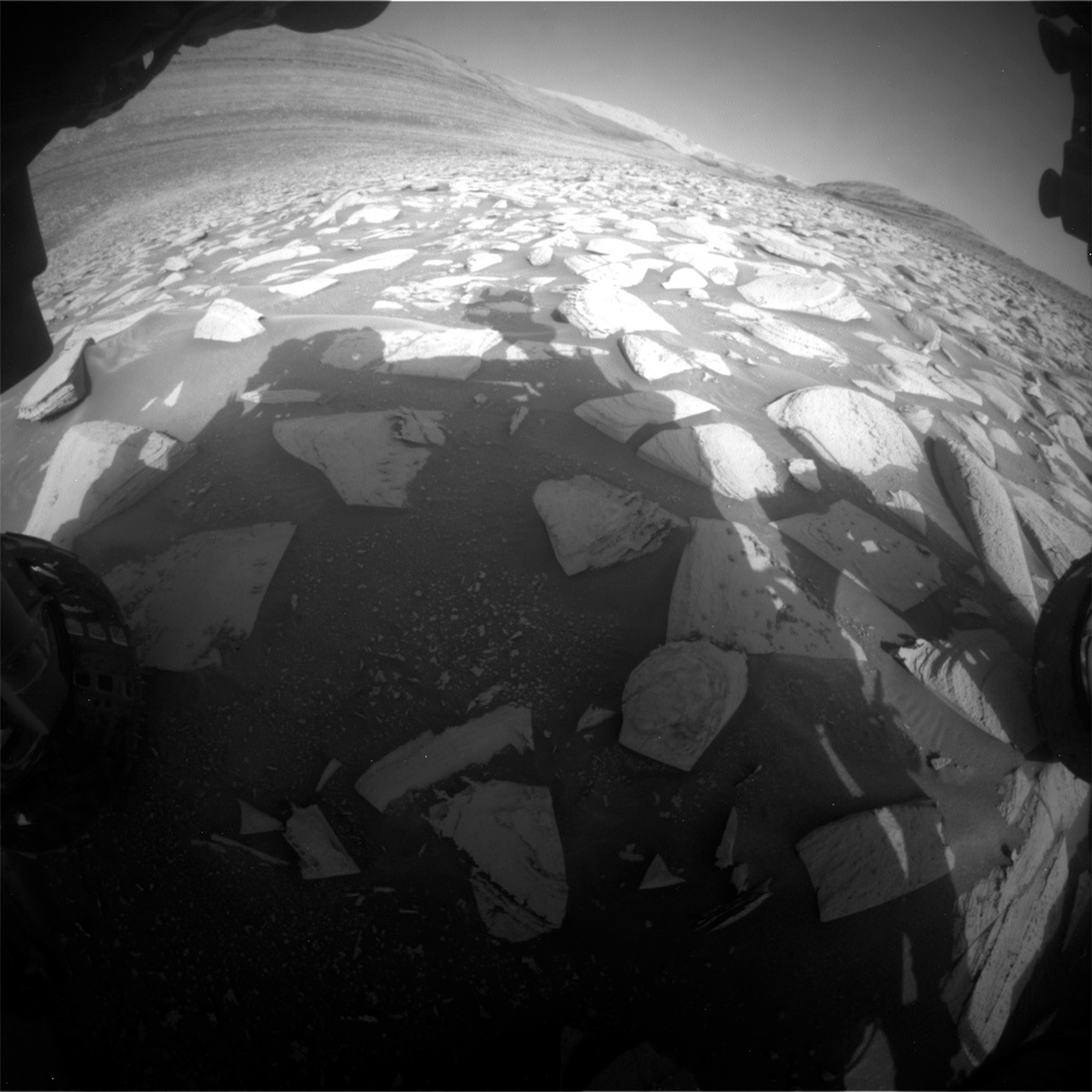Earth planning date: Wednesday, September 13, 2023
Our view out of the window, in this case the front hazard camera, is spectacular today, as you can see above. Regular readers of the mission updates will know that this rocky road has caused us problems in our driving lately, but today it all went smoothly. We are planning another 30 metre drive in today's plan, so let's hope Mars will read the script (and agree to it!). While we are planning, this blogger needed some sugar… and so I am looking at two rocky roads, one on Mars, and one dropping chocolate all over my computer (shhht, don't tell anyone!). The Martian one clearly looks more beautiful, though, and I once again imagine what it would be like to walk up that hill, look at the layering in the walls.
In the current parking position, we have entered a new quad of the map, the Bishop quad named after the small town of Bishop. Bishop lies in the shadow of California's Sierra Nevada mountain range, and is the starting point of many trips into the high Sierras from the east. That means, we have a large range of new names themed after the Sierras at our disposal. Curiosity will take an APXS and MAHLI image of the target we named "Mosquito Flat." It is a rock with an interesting dark feature, which will complement the observations on the lighter toned bedrock Curiosity targeted in the past plans. ChemCam is targeting a diagenetic feature with its LIBS on a target called "Chocolate Peak" (nothing to do with the state of my computer keyboard, I promise, as this name refers to the 11,682 foot Chocolate Peak in eastern Sierras). ChemCam also looks at the Gediz Vallis Ridge with a long distance RMI observation. ChemCam also has an AEGIS LIBS observation in the sol after the drive.
Mastcam has a multispectral observation of the DRT spot at "Mosquito Flat" in the plan, a documentation image on "Chocolate Peak" and two larger mosaics. One is directly to the starboard side of the rover to investigate all the laminations and diagenetic features we see in the area around us, and one on the Gediz Vallis Ridge, which continues to be an intriguing target that we learn more about as we get more images.
Atmospheric observations with a focus on the opacity of the atmosphere as well as DAN looking at the subsurface and a MARDI image round off the plan. Have fun on the rocky road, Curiosity.
Written by Susanne Schwenzer, Planetary Geologist at The Open University
from NASA Mars Rover Curiosity: Mission Updates https://ift.tt/ImXQOwe

Comments
Post a Comment